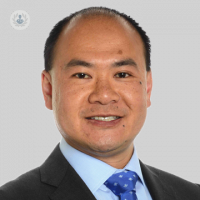What can affect a pacemaker?
Autore:A pacemaker is an electronic device that is implanted into the chest to regulate one’s heart rhythm if it is irregular or too slow or fast. It is important to know, however, that certain devices can have a negative impact on the pacemaker and its functionality. Speaking to expert consultant cardiologist Dr Fu Siong Ng, we wanted to know what types of things should be avoided, or approached with caution, if you have a pacemaker. The London-based cardiologist also discusses what types of sports he advises against to minimise the risk of complications.

What precautions should I take with a pacemaker?
A patient with a pacemaker has to be most careful in the first few weeks following the operation. The pacemaker is implanted, under a local anaesthetic, through a minor incision in the shoulder. If there are no problems following the operation, we advise keeping the wound dry and avoiding baths for the first few days, so the wound doesn’t fall apart or become infected.
Patients should not move their arms too much either. Once we put the pacemaker in and the leads are stitched in place, during the first few weeks if you move your arm too much, there's a chance that everything can move and we might have to do another operation to reposition the pacemaker. I often tell patients not to lift their arm up past the horizontal for at least four weeks, up to six weeks.
We advise against any heavy lifting with the arm on the side of the pacemaker. Don't do any vigorous upper arm activity, like swimming or playing tennis, for at least six weeks to allow the wound to fully heal before you get back to a normal life. Once it has healed, however, patients can expect to go back and live a very active life six weeks or so after the pacemaker procedure.
What can you not do with a pacemaker?
There's very little that a patient is not allowed to do once they've had the pacemaker implanted. In the first six weeks, as I mentioned, you have to be very careful about the wound and moving the pacemaker too much. That being said, generally when people ask me how will this affect my lifestyle, I would say after this initial recovery period, if everything heals, you should go back to doing all the activities that you want to do. There's nothing specific that we want you to avoid, perhaps some devices that might interfere with the pacemakers.
What devices interfere with pacemakers?
The pacemaker is a very sophisticated, electronic device. It records the heartbeat and delivers electrical pulses to stimulate the heart to beat in a regular way. The problem with any electrical device is, if you have some strong electromagnetic field, there is a theoretical risk that this might interfere with the function of the pacemaker.
Although the risk is low, as most devices have special casing and very sophisticated electronics to prevent the problem from happening, but we generally advise that you keep a distance from household devices. Certain devices that, normally, are very safe, like microwaves or hair dryers, we recommend keeping at least six inches away. Similarly, induction hobs produce a stronger magnetic field, so we recommend staying two feet away, you can use your other arm to cook.
Things like security metal detectors and security systems are generally fine, but don’t get too close to them or linger too long in the gates, move through them quickly. Mobile phones should be kept six inches away, so don’t keep them in pockets on the same side of the pacemaker.
Most of these devices rarely cause any issues but we always advise taking general precautions around anything that could possibly cause an interference with a pacemaker.
Why do people with pacemakers avoid strenuous exercise?
The first few weeks after the operation are the most crucial. If you exercise too vigorously, the pacemaker and the leads might move around. If this happens, we would have to reoperate and reposition them. Once the pacemaker has healed, patients can go back to exercising. We tend to advise them to be careful particularly with contact sports, as the device could be affected; martial arts, for example, where people might kick you in the chest, isn’t a sensible option. General exercise, however, once the pacemaker has healed is fine. The purpose of a pacemaker isn’t to restrict patients, rather to allow them to go back to what they enjoy doing, and this includes many different forms of exercise.
Why should patients with pacemakers avoid strong electromagnetic fields?
The electromagnetic field can very briefly interrupt the pacemaker's function, so for that reason it’s advisable to not get too close to electronic devices. If the patient is dependent on the pacemaker to keep the heart beating, this can be a very bad thing, if even temporarily.
That being said, if a safe distance is maintained, it will be fine. Six inches is the general rule for devices such as mobile phones, microwaves, and hair dryers. With induction hobs it’s best to keep two feet away, but even then, most people stand that far from them when cooking anyway. We never tell patients that they can’t use these devices, they just need to be a little bit sensible, given the very small risk that it might interfere with the pacemaker if the device is held very close to it for long durations.
Dr Fu Siong Ng is an experienced consultant cardiologist, practising in London. If you are interested in booking a consultation with his, you can do so by visiting his Top Doctor’s profile today.


